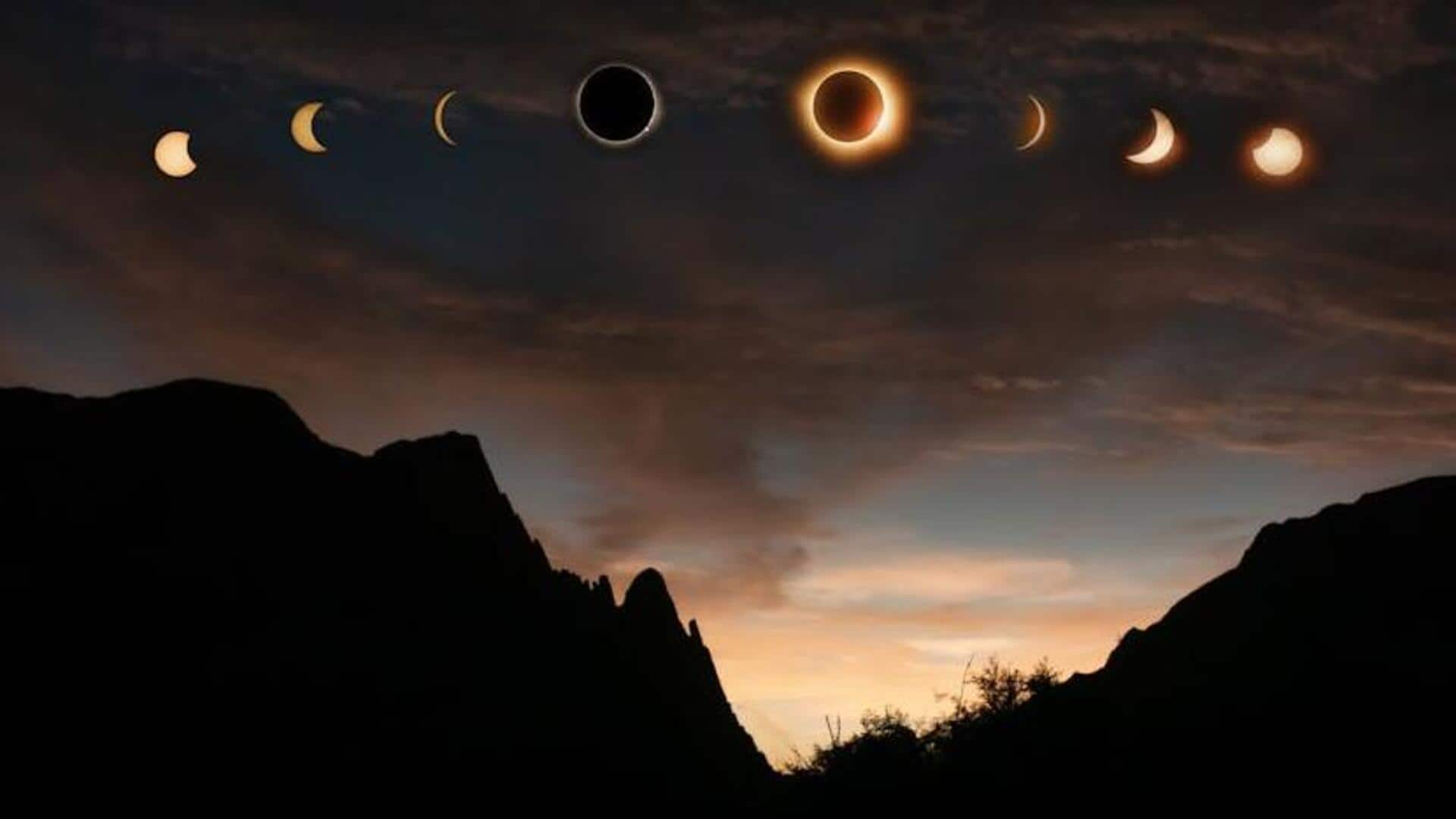
Solar eclipse chasing: Celestial phenomena adventures
What's the story
Solar eclipse chasing is the ultimate thrill for space enthusiasts. This one-of-a-kind adventure takes you to far-flung corners of the world to witness the cosmic ballet of a solar eclipse. This isn't your typical sightseeing. Chasing eclipses demands meticulous timing and planning. These heavenly phenomena are fleeting - mere minutes long - and can only be seen from specific "paths of totality" on Earth.
Planning
Planning your eclipse adventure
Start by determining the date and location of the next eclipse. Solar eclipses happen at least twice a year, but they aren't always visible from all parts of the world. Doing your research early will help you plan your trip accordingly. It's crucial to secure accommodations as early as possible. Hotels in optimal viewing areas tend to sell out rapidly once the date of an eclipse is announced.
Gear
Essential gear for eclipse viewing
To view a solar eclipse safely, you need the right equipment. The key item is a pair of ISO-certified solar viewing glasses. These glasses protect your eyes from the sun's harmful rays. Regular sunglasses are not safe to use. You might also want a tripod-mounted telescope or binoculars with solar filters. These can help you see the eclipse in more detail. Make sure to test everything before the big day.
Location
Choosing the perfect location
Unlike total solar eclipses, which are only visible from narrow paths on Earth, partial eclipses can be observed from broader regions. However, for the most spectacular experience, you should target locations within the path of totality where the sun will be completely covered by the moon. Other considerations like weather patterns and accessibility should also factor into your decision, as clear skies are essential for an unobstructed view.
Community
Joining an eclipse chasing group
If it's your first time, consider joining an organized group led by veteran eclipse chasers to make the most of your experience. These groups travel to prime viewing spots and supply the equipment and expertise needed to safely witness the eclipse's magic. Plus, you'll learn a ton about astronomy and make new friends along the way!
Photography
Tips for capturing stunning eclipse photos
To photograph a solar eclipse, you need a camera with manual settings and a tripod for stability. A telephoto lens with a solar filter is essential for capturing detailed sun images without damaging your camera's sensor. Practice makes perfect! You only have a short window during totality to get that perfect shot, so practice your photography skills beforehand.